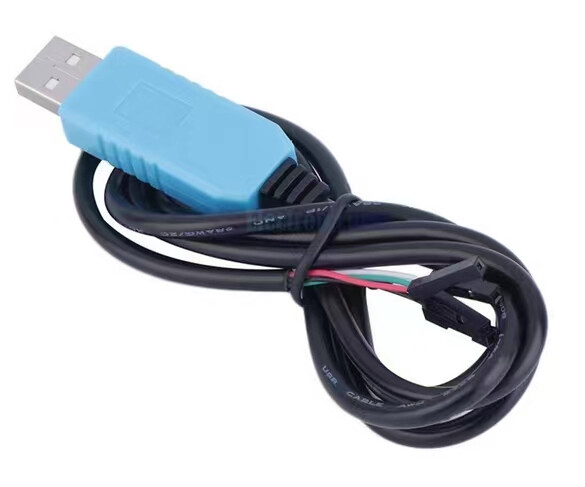Thank you. That clarifies sufficiently.
Are the main JTAG and PORT console ports now sufficiently buffered and tolerant that 5v are likely to be damage and 3.3V’s may or may now work depending on the lenght of the cable (in CM, not meters and meters long) and the depth of the red zone between how high a low could still be and how low a might be in order to infer a proper stpread of voltages. This is a big problem for us on BeagleV when people started plugging random lab drawer cables and two “identical” cables (one with PL2303 and one with FTDI or CH330 (I think) would work completely differently. on the ports on the I/O bus (buffered pins!) and on the planar where they went almost directly into the 7110 at 1.8V.
Thank you!
Balbes150, I don’t directly conflict the staff of StarFive, but this sets off alarms for me. This cable isn’t passive It needs more that connecting wires in a rectangular shell to dupont-style connector. That chip needs to do do USB Stuff (enumaration, pipe multiplexion, error detection/ retransmission, hub power notifications, tx pipe, rx pipe, etc) and plain old UART-y things on the other, marking and detecting parity error, handling 5-8 data bits, stop bits, stop-and-a-half, break, and all that jass. You can argue that it’s not a super powerful chip and you wouldn’t be wrong, but I don’t want to build one out of 7400 series parts, either. There’s no charge pump inthese things; if you need more swing on the 232 side, you us serial BUS drivers and receivers to boost the signals UP to 12V (or more) but coming right out of these. I’m pretty sure the VOUT on TX is never going to exceed V unless is a traction of a volt coming from an external cap that they can get recharged in time… That’s just not something serial port chips do any more, is it?
Looking at that blue case, it looks a lot like an Adafruit 954. (it’s entirely possible that cas isn’t unique) depending on teh date of manufacturing.
Blockquote from Adfruit’s Product Manual, shows two posssible USB/Serial chips:
1 Prior to July 1 2014 this cable would come with a PL2303HX chipset and a black USB body. After July 1, 2014 we changed to a violet body and the PL2303TA chipset. The new 'TA cables are Win8 compatible, and are more reliable especially when dealing with random USB-disconnects.
2 As of Dec. 21, 2016 we will be shipping cables with SiLabs CP2012 chipset instead of Prolific. SiLabs chips seem to have better driver stability, and can handle very high speeds and ‘unusual’ non-standard baud rates. Other than the driver installation, the cables perform identically.
This body isn’t black,so we can disregard the earliest run, leaving us with PL2303HX and PL2303TA
I know from my own experience with chips that they sometimes CAN leak enough resistance from the R&D (I/O, bank of channel switches, whatever) up enough to look like the simplest cases worked. Debugging the hard stuff because you didn’t actually plug in (or fix the power supply to…) The Thing can make you crazy. Because of the diversity of serial speeds, a mark and a break can keeep the line almost in a steady state for the length of a character time, repeated long time.
Section 9.0 of the book shows us that older cables will have PL2303HX to provide energy and it has mixed messages.VDD_5 and VO_33. These are biased. Anything on the I/O bus from in the rang e can be converted rom that. The exercise is thinkingm, though, no faking, so I don’t get who looks good and who looses badly there,
One point of open source races, gamges, cond contestants id that anyone (qualiffied) should be able to yell O “whoa? WTH?” and get a restart after an evaluation of mechanics . That didn’t seem to happen here.
Collectively, the SiFive/IceFive/JacksonFive/MaroonFive teams could have had enouh hint from early though in the game to simply wirthdraw, pool their worksfor a year, probably won with the second most fast and kept Top Secrtet for starting next year, It’s OK to hold a bit back. It can’t stay there forever. Those jnw jockey boots fo spiking the dars of drivers gone past may best be forgotten about. 
